Lyncina leviathan (Schilder & Schilder, 1937)
Leviathan
cowry, 48-78mm
The shell of Lyncina leviathan
looks at first glance to be just a large Lyncina carneola.
There are, however, differences reported in the morphology of both the shell
and animal. The differences between these two species are covered in more detail
on the Lyncina carneola
page. One big reason, and the primary one we agree with for keeping the
species separate, is unfortunately one that you cannot see without killing and
dissecting the animal. The feeding structure (the radular teeth) of L. leviathan
and L. carneola have been reported to be distinctly different (Kay (1961)). Externally, the shell of L. leviathan lacks a bluish-white border
to the dorsal orange color; this border is usually present in fresh specimens
of L. carneola, although it does fade with time. Also, the shell of
L. leviathan usually has distinct bumps along the lateral margins while
this area on L. carneola is smooth. Also, Lyncina leviathan
tends to grow much larger than L. carneola, although their size ranges
do overlap. The papillae on the mantle of Lyncina
leviathan are large and stout, topped with numerous branches
resembling a leafless tree while those of L. carneola are reported
to be flat with fingers at the top, but our photos of L. carneola do
not necessarily back this up. Although in Hawaii this
species is often found in very shallow surging water on basaltic coastlines,
here in the Marshalls it is more common deeper. It has been found on the leeward
seaward slope and on lagoon pinnacles, but seems most common on lagoon bottom
shipwrecks, where empty shells are common even though the species is seldom
seen alive. Depths
in the Marshalls range from about 6 to 40m and probably deeper.
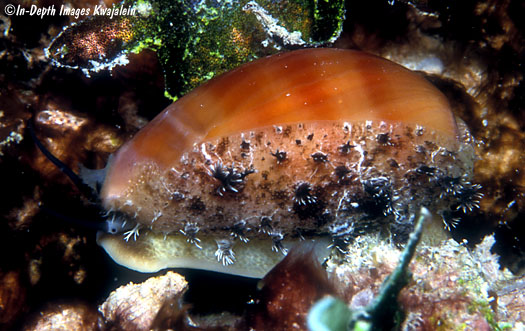
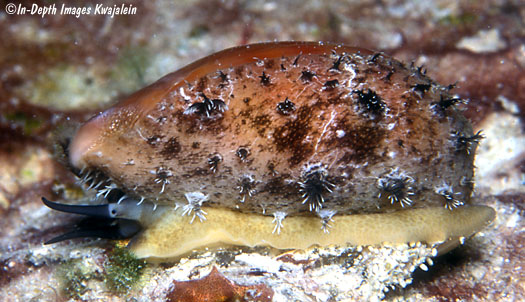
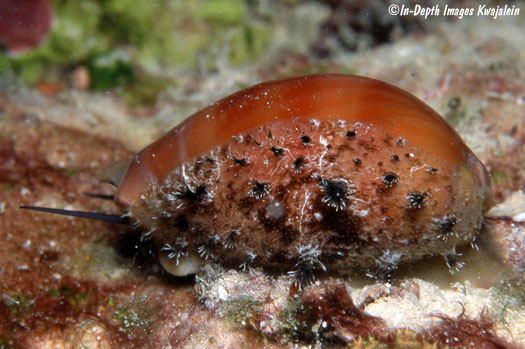
When first observed on a night
dive, the specimen below had its mantle extended, which had clear characteristics
of Lyncina leviathan.
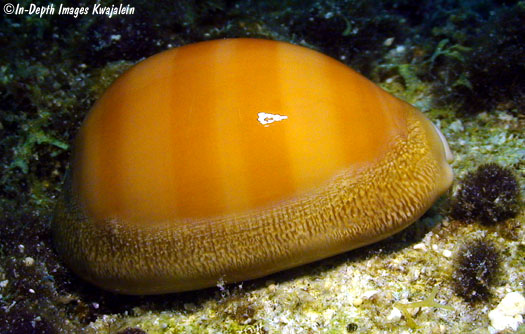
63.5mm, 20 June 2009
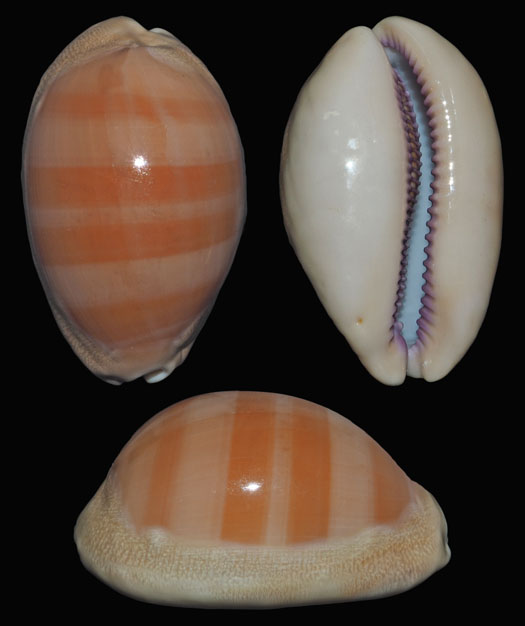
48.2mm, 1973
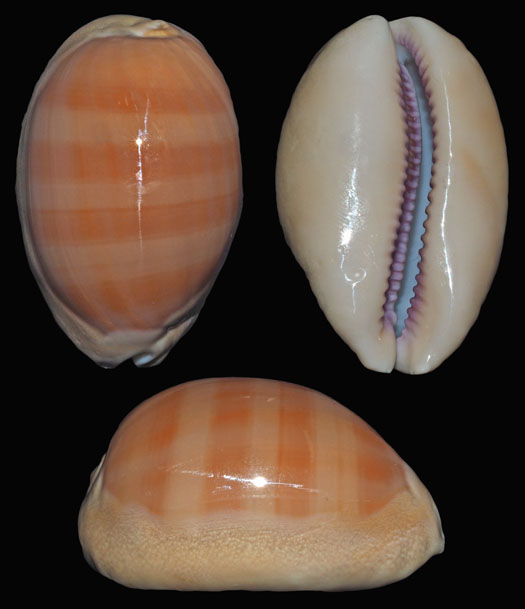
Created
1 April 2008
Updated 25 February 2020
Back to
cowries
Kwajalein Underwater Home






